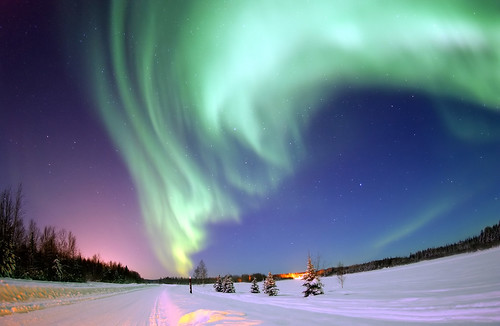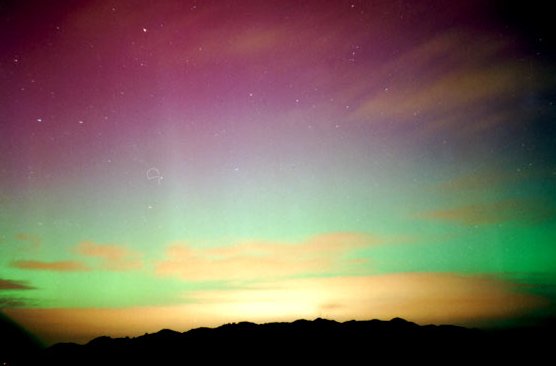Project Page


Minas Tirith

Mount Doom, and Barad-Dur

Bag-end, Bag-shot row, Hobbiton, The Shire

Helms Deep; The Great Fortress of the Roherin
THE REAL PROJECT
The Aurora Borealis
If you look up while in the far north you may see the aurora borealis, more commonly known as the northern lights. The name aurora borealis is derived from the the Greek God aurora, meaning north wind. However, these lights are also visible in the southern hemisphere. Below is a photo of the northern lights.

What are they?
The cause of these beautiful lights in the sky can be understood by anyone with a little knowledge of physics and chemistry. To start off it is important to understand the two main "ingredients" required for the northern lights:
The first important "ingredient" comes for the far away in the solar system. The sun is constantly emiting solar wind. Solar wind is a stream of charged particles originating from the outer layers of the sun. The energy contained within the waves of free flowing electrons and positivly charged ions, is the fuel of the aurora.
The second important "ingredient" for the aurora is the earth's magnetosphere. Surrounding the earth is an invisible shield that protects is from incoming solar waves. Due to the earth's rotational axis and buildup, amongst other factors the magnetosphere forms a oxbow shape (As seen in image below).
Now knowing a little about solar waves and the magnetosphere, it is possible to explain the aurora. As the solar wind travels towards earth it is blocked by the magnetosphere. Due to the the shape of the magnetosphere, ions withing the solar wind are compounded near the north and south poles of the earth (See Below). Here the ions collide with the elements contained within our atmosphere, causing such the electrons within such elements to jump to their excited state. When the electrons within these elements return to their ground state they give off energy in the form of light. Specific elements give off specific colours of light. Oxygen emmisions lead to green or magenta coloured displays depending on the amount of energy that is absorbed. Nitrogen emmits a blue colour when it regains an electron after it has been ionized. It emmits red when it returns to its ground state. Combined these emmisions make up the polar lights.

On Other Planets:
 Other planets in the solar system have magnetic fields as strong or stronger than Earth's. Using the Hubble Space Telescope, auroras have been photographed on Jupiter, Saturn, Uranus and Neptune.
Other planets in the solar system have magnetic fields as strong or stronger than Earth's. Using the Hubble Space Telescope, auroras have been photographed on Jupiter, Saturn, Uranus and Neptune.
Video:
A video presented by National Geographic of the Northern Lights over Norway:
Sources:
http://www.phy6.org/Education/aurora.htm
http://www.phy6.org/Education/Intro.html
http://www.spaceweather.com/aurora/images/24nov01/Moss1.jpg
http://farm4.static.flickr.com/3596/3389058334_1ac9d4dc08.jpg
http://en.wikipedia.org/wiki/File:Structure_of_the_magnetosphere.svg

Comments (0)
You don't have permission to comment on this page.